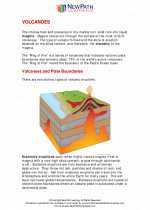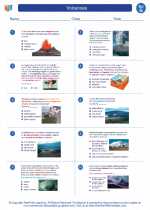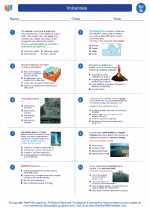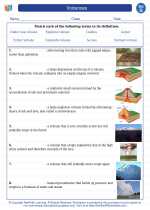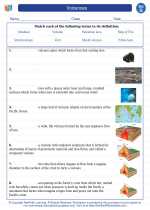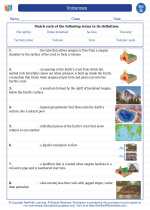Volcanoes -> mountain building
Mountain Building
Mountain building, also known as orogeny, is the process of the formation of mountains through tectonic forces. It involves the uplift, folding, faulting, and volcanic activity that create mountain ranges.
Causes of Mountain Building
Mountains are formed through several processes:
- Plate Tectonics: The collision of tectonic plates can cause the crust to fold and uplift, leading to the formation of mountain ranges.
- Volcanic Activity: Volcanic eruptions can build mountains through the accumulation of lava and volcanic debris.
- Erosion: The gradual wearing down of the Earth's surface by wind, water, and ice can expose and shape mountain ranges over time.
Types of Mountains
There are different types of mountains based on their formation:
- Fold Mountains: Formed by the folding of rock layers due to tectonic forces, such as the Himalayas and the Appalachians.
- Volcanic Mountains: Created by volcanic activity, such as Mount St. Helens and Mount Fuji.
- Block Mountains: Formed by the uplifting of large blocks of the Earth's crust, such as the Sierra Nevada range.
Effects of Mountain Building
Mountain building has significant impacts on the environment and the Earth's surface:
- Climate: Mountains influence local and regional climate patterns, leading to variations in temperature and precipitation.
- Biodiversity: Mountain ranges support unique ecosystems and a high diversity of plant and animal species.
- Water Resources: Mountains play a crucial role in regulating the flow of rivers and the distribution of water resources.
Study Guide
To study the topic of mountain building, consider the following key points:
- Understand the processes involved in mountain building, including tectonic forces, volcanic activity, and erosion.
- Identify different types of mountains and their characteristics, such as fold mountains, volcanic mountains, and block mountains.
- Examine the effects of mountain building on the environment, climate, and biodiversity.
- Explore case studies of specific mountain ranges around the world and their geological history.
- Consider the human interactions with mountain environments, including resource utilization and conservation efforts.
By mastering these concepts, you can develop a comprehensive understanding of mountain building and its significance in the Earth's geology and ecosystems.
.